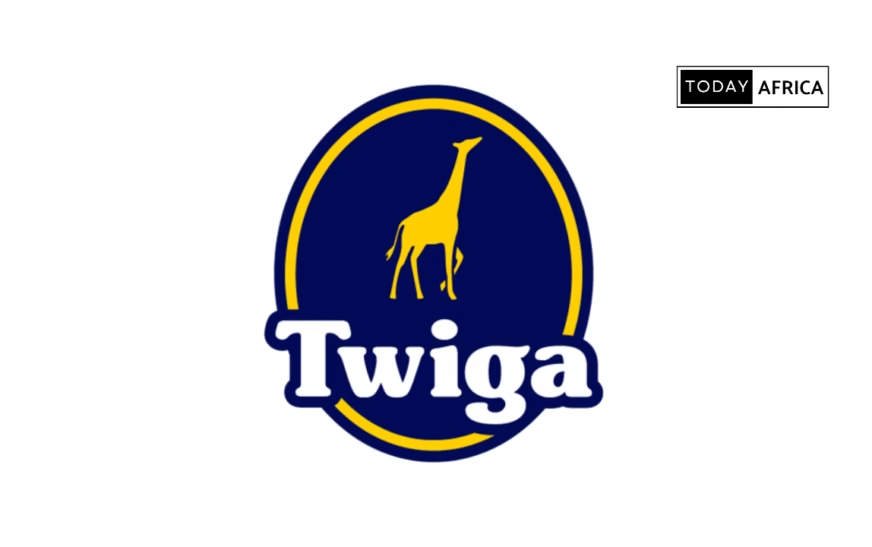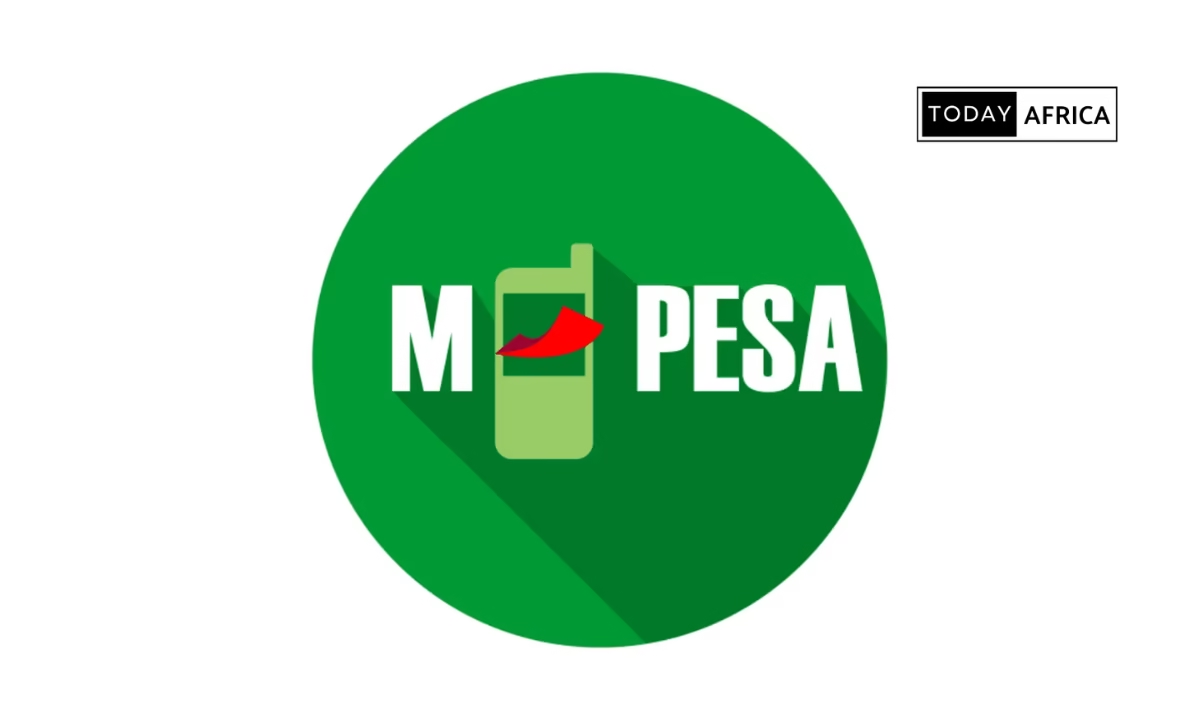What immediately stands out about Twiga Foods is helping smallholder farmers reach city markets while allowing urban vendors to avoid inflated costs driven by middlemen.
Now imagine cutting out many of those intermediaries, using technology to fix the logistics, and connecting farmers directly to vendors. The potential is huge.
So, the story of Twiga Foods isn’t just about a startup.
It’s about confronting one of the continent’s most persistent structural problems. Over the last decade, the company has grown, pivoted, raised serious capital, and learned some hard lessons along the way.
This inside Twiga Foods’ journey traces the founding story, their funding journey, strategic moves, societal impact, challenges, and lessons learned.
Disclaimer: Based on publicly available information as of November 2025 from reliable sources such as World Food Bank, IFC, TechCrunch, Founder Africa, and Techpoint Africa.
Founding story
Twiga Foods was founded in Kenya in 2014 by two co-founders, a Kenyan corporate executive, Peter Njonjo and US-born investor-entrepreneur Grant Brooke.
Njonjo had spent much of his career in the Coca-Cola system in Africa and understood distribution and retail at scale. Brooke came from a research and investment background, having studied informal markets and worked in East Africa.
They initially intended to export Kenyan bananas to the Middle East but discovered that the basic supply chain was so broken that the export plan couldn’t get off the ground.
Farmers lacked traceability, lacked reliable buyers and the produce lost value.
That insight led them to refocus, instead of trying to export, why not fix the Nigerian-style (or Kenyan-style) retail supply chain, connect farmers to the many informal “mama mbogas” (street market vendors) in Nairobi, reduce the number of intermediaries, build technology and logistics.
As the IFC story puts it: the real problem was not “food production” per se, but “market insecurity.”
In Kenya, the retail food market is highly fragmented (hundreds of thousands of informal kiosks) and food accounts for a very high proportion of consumer expenditure because of inefficiencies.
For example, in Kenya in 2015, consumers spent 46% of their household income on food.
Pilot phase & early model
In the early years (circa 2014-2016) Twiga started by aggregating farmers and delivering fresh produce to urban vendors.
A GSMA case-study from 2018 shows that by January 2018, Twiga had registered more than 3,000 farmers, was sourcing 245 tonnes of bananas each week, delivering via 7,000 weekly orders to 3,500 vendors.
In those days, they built mobile ordering (via feature phones/USSD and smartphones), used mobile payments (Kenya’s ubiquitous M-Pesa) for vendor and farmer payments, set up collection centres, and built a small fleet of delivery vehicles.
They faced real logistical challenges, including collection from smallholders in peri-urban/rural areas, cold-storage of bananas (especially because bananas are perishable), aggregating many small orders into efficient delivery, and building vendor trust (vendors traditionally go to markets early and buy produce themselves).
For example, Njonjo noted that early on he had to buy vans outright because of credit constraints.
As the model matured, Twiga shifted from simply a produce-aggregator to a tech-enabled supply-chain company: what I’d call “farm + logistics + tech + vendor network.”
They built mobile apps for vendors, data systems, warehouses and a proprietary fleet. They also began diversifying beyond bananas into a broader range of produce and later into FMCG (fast-moving consumer goods).
For example, in 2019, they reported that roughly a 50/50 mix of fresh produce and FMCG was emerging.
While the structure of the company remained lean in the early phase, leadership vision shifted from exporting produce to focusing on the Kenyan informal retail market to building an end-to-end food supply platform.
Brooke has publicly said the key problem was communication/coordination between urban purchasing power and rural supply.
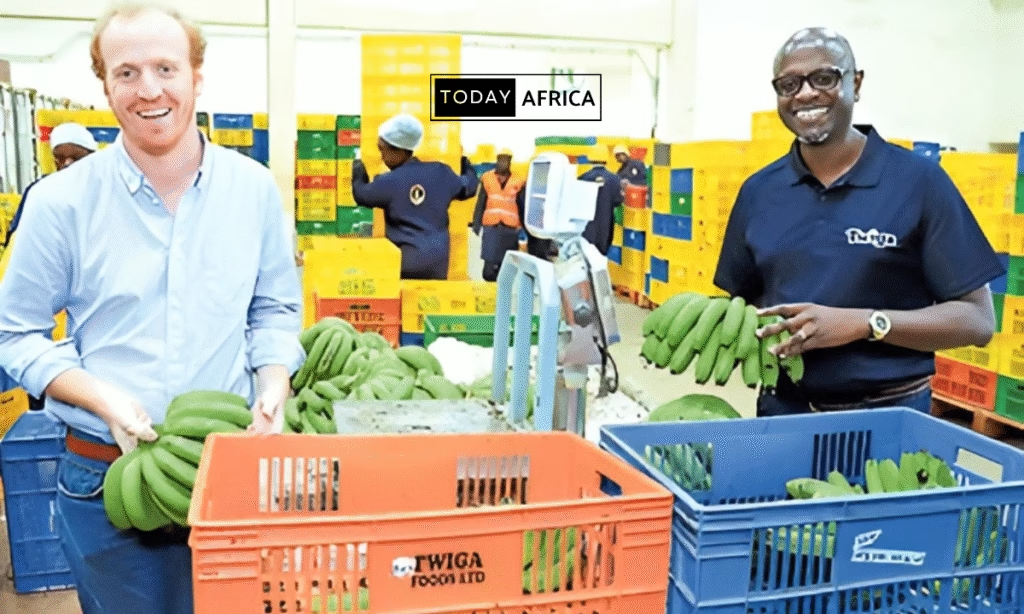
Key early milestones
- Launch of a digital marketplace/mobile ordering platform (around 2015-16) for farmers and vendors. (See GSMA case study).
- Expansion beyond Nairobi metro, into other Kenyan counties (per Twiga’s own commentary)
- Introduction of logistics fleet and collection centres (GSMA: 25 collection centres and 50 delivery trucks by the early phase).
- Evolving corporate structure: from pure aggregation to having warehousing, cold storage, logistics, vendor credit and tech stack.
Twiga’s founding story is rooted in firsthand observation of inefficiencies in Kenya’s food distribution system, building a practical pilot, iterating logistics and tech, and scaling into a full-value chain enterprise.
Related Story: Inside Wave’s Journey: Francophone Africa’s First Unicorn
Funding history & investors
Here is a chronological breakdown of major funding rounds and how Twiga used the capital to grow.
Early seed/pre-series (2014-2016)
In its earliest phase, Twiga raised seed funding and grants to build the platform.
While exact public details are scarce, the GSMA and IFC profiles indicate Twiga received grants/impact funding to develop mobile ordering and vendor platforms.
Investors/partners in this early phase included the GSMA (via its Ecosystem Accelerator), DOB Equity, Blue Haven Initiative, and various angel/impact investors. These funds were used to build the mobile platform, onboard farmers/vendors, pilot logistics, and test the model.
Series A (2017)
In 2017, Twiga raised approximately US$10.3 million in a Series A round led by Wamda Capital, along with DOB Equity and other early backers. The purpose was to scale the vendor base, diversify product categories (beyond bananas), invest in tech-infrastructure and logistics expansion.
Series B (2019)
In October 2019, the company announced raising approximately US$23.75 million in equity (led by Goldman Sachs) and around US$6.25 million in debt, effectively a US$30 million Series B total.
It was to build out the supply-chain infrastructure, deepen logistics & warehousing, expand into FMCG, scale operations across Kenya (and eye regional expansion).
Series C (2021)
On 1 November 2021, Twiga announced a US$50 million Series C round, led by Paris/Nairobi private-equity firm Creadev, with participation from IFC Ventures, TLcom Capital, OP Finnfund, DOB Equity, among others.
To expand beyond Kenya (East Africa and West Africa), build out automated/large-scale distribution centres (e.g., Tatu City facility), start manufacturing/own-production (Twiga Fresh farming subsidiary), and further integrate FMCG categories and credit services.
For example, part of the funding will support a “proof-of-concept” to reduce consumer food costs by over 30%.
Other financing & strategic investment
Alongside equity rounds, Twiga has raised significant debt / mezzanine capital (e.g., via IFC) and has invested in their own farming subsidiary.
For example, Twiga injected some US$10 million into Twiga Fresh (650 hectares) in 2022. (Business Daily) Also note unavoidable operational investments (warehouses, fleet) that require large capex.
Summary of how funding shaped growth
- Early funds: Validate the model, build tech and logistics pilot, onboard farmers/vendors.
- Series A: Scale vendor/retailer network, diversify product categories, deepen tech stack.
- Series B: Build infrastructure (warehouses, fleet), expand operations across Kenya, broaden into FMCG.
- Series C & later: Regional expansion, own-production/farming (vertical integration), automation, credit services, deeper tech/data investment.
Twiga’s investor base includes both African- and international investors (e.g., DOB Equity, TLcom Capital, IFC, Goldman Sachs, Creadev).
They were attracted by the large informal retail market in Africa, Twiga’s early traction, mobile-money-enabled platform, logistics backbone, and ability to scale a fragmented food distribution system.
Read Also: Inside Sendy’s Journey: The Startup that Tried to Rewrite African Logistics
Strategies fueling the growth of Twiga Foods
What strategic moves really allowed Twiga to scale and differentiate? Let’s examine key levers.
1. Technology and data-enabled informal trade
Twiga built an ordering platform that allows small retail vendors (kiosk, open-stall, informal supermarket) to place mobile orders via USSD or smartphone app, and pay via mobile money (M-Pesa).
This reduces the friction of cash, speeds payment, and improves operational transparency.
They also developed a data warehouse (via a partnership with Google Cloud) and use analytics/ML for routing, inventory forecasting, dynamic pricing, and credit-scoring of retailers.
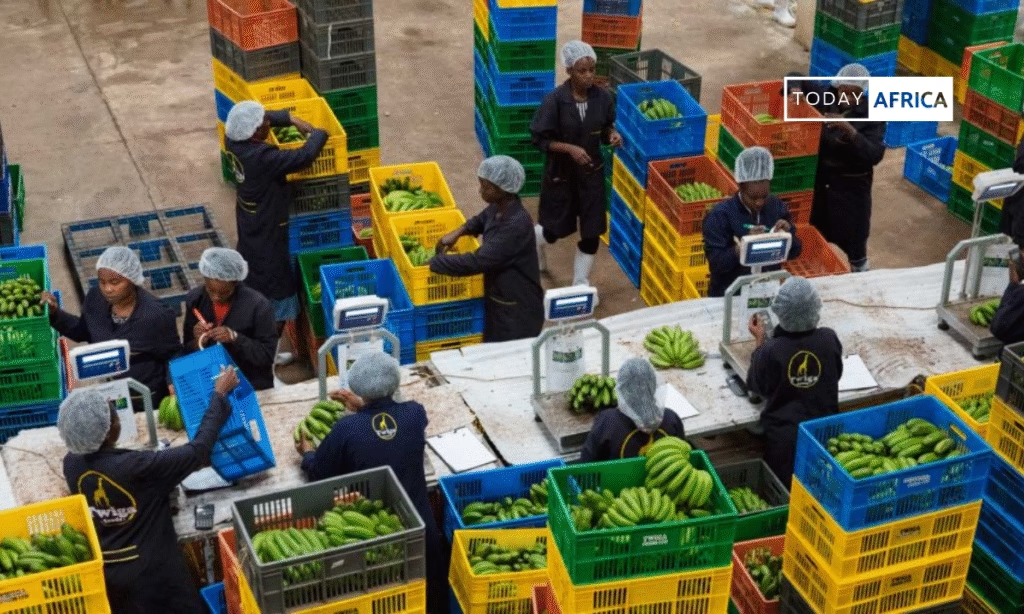
2. Efficiency, trust & value-chain optimization
Twiga’s value proposition to each stakeholder is clear:
- Farmers get a stable market, better prices, faster payment.
- Vendors get reliable delivery, consistent quality, lower wholesale cost, and less time spent sourcing produce.
- Consumers ideally benefit from fresher produce at lower cost.
For example, Twiga claimed to reduce post-harvest losses for produce on its network from 30% down to 4%. By guaranteeing payments, improving logistics, centralising collection, they build trust in segments accustomed to cash, middlemen and uncertainty.
3. Partnerships and collaborations
Some key examples:
- Google Cloud: Twiga uses cloud infrastructure and analytics for warehousing, routing, delivery and reducing costs.
- IFC (International Finance Corporation): Beyond investment, IFC provided operational support and credibility to Twiga’s model.
- Mastercard, local banks and mobile-money platforms: enabling vendor credit, mobile payments, financial services for informal retailers.
- Strategic relationships with manufacturers and FMCG suppliers: as Twiga expanded into FMCG, these partnerships allowed Twiga to broaden its product offering.
4. Logistics innovation & infrastructure
Twiga invested in:
- Centralised warehouses/collection centres where produce from farmers is sorted, aggregated, chilled, and loaded for delivery.
- Delivery fleet: trucks dedicated to vendor fulfilment, route-optimised, scheduled before midday to get produce to stalls early.
- Cold-chain logistics especially for perishables (bananas, tomatoes, onions).
- Large-scale distribution centres: e.g., in Tatu City they launched a major facility with daily handling of millions of kilograms.
These infrastructure investments allowed Twiga to guarantee delivery windows, consistent quality and scale.
5. Geographic expansion strategy
Twiga began in the Nairobi metro, then expanded into other Kenyan counties, including Kiambu, Machakos, Meru, Rift Valley, etc. Their 2021 funding round emphasised East Africa and West Africa expansion (Uganda, Tanzania, Côte d’Ivoire, Ghana, Nigeria).
They also expanded the product mix: beyond fresh produce into FMCG (cooking oil, maize flour, snacks). This gives more frequent orders, stronger margin potential and better vendor stickiness.
6. Marketing & brand positioning
One thing worth emphasising: Twiga didn’t invest in flashy consumer advertising (its customers are vendors).
Instead, the brand message emphasised reliability, fair pricing, and social impact (farmers, women and youth inclusion). For informal vendors, the promise of “deliver before midday”, “just order on the app/phone”, “no more 4 am trips to Marikiti” resonated.
Thus, Twiga positioned itself as a trusted partner to informal retail MSMEs, building credibility rather than hype.
Related Story: Inside PiggyVest’s Journey: How an Idea Changed How Nigerians Save
Competition in the agritech ecosystem
Twiga operates in a crowded, complex ecosystem, let’s map the landscape and show what makes Twiga different.
Local competitors/peers
- Wasoko (formerly Sokowatch): A Kenyan startup targeting informal retailers with FMCG supply and credit.
- Apollo Agriculture: Focuses on farm productivity (inputs, credit) rather than last-mile distribution.
- Tulaa: Supports farmers via marketplace for inputs and produce.
- FarmDrive: Fintech for farmers, scoring creditability.
How Twiga differs
Twiga is strong on the logistics/distribution side of “farm → urban kiosk”. It builds physical infrastructure, fleets, warehouses and integrates technology for the informal retail channel. Many others focus earlier in the value chain (inputs, productivity) or on fintech. Twiga’s edge is last-mile food distribution.
Global parallels
In India, for example, Ninjacart connects farmers and retailers via logistics. Some global agribusinesses (Olam International) are building digital supply chains.
But Twiga’s uniqueness lies in Kenya’s informality, mobile money ecosystem, fragmented retail, zero scale of logistics + tech, and high food-cost context.
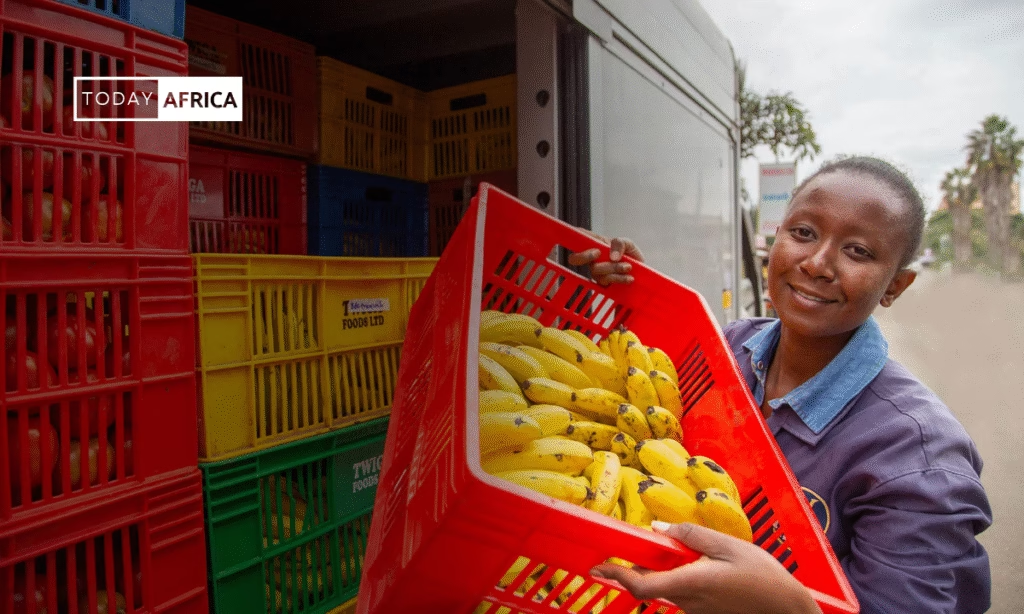
Unique pressures
Operating in Kenya/informal value-chain brings specific constraints:
- Poor road and transport infrastructure increases cost of logistics and spoilage.
- Fragmented farmers (thousands of smallholders) make aggregation hard; inconsistent quality, supply seasonality.
- Behavioural resistance: many vendors/farmers comfortable with cash and brokers; switching to tech/delivery takes time.
- Regulatory/policy risk: food is politically sensitive; tax/import regimes, subsidies and government price controls can shift quickly.
- Adversarial competition: informal brokers might lower price or resist being disintermediated.
Regulatory/market environment
Kenya has mobile money-led payments (M-Pesa), a supportive digital trade environment, but the informal sector is loosely regulated.
Hence, Twiga both benefits (less regulation) and suffers (less formal protection, less infrastructure). The agricultural sector faces subsidies, cold-chain gaps, and high wastage.
Twiga’s model is trying to fill those gaps.
Impact on society
Beyond business metrics, what has Twiga achieved for farmers, vendors, and the broader economy? Let’s dig in.
Impact on farmers
- Farmers gain access to stable off-take and faster payment: The GSMA case-study notes that Twiga registered thousands of farmers and paid them via mobile money within 24 hours of delivery.
- According to one estimate, Twiga worked with 17,000 farmers and 45,000 vendors in its early phase.
- Key inclusion: women and youth: The company reports that more than 65% of its vendor network is women and at least 45% are youth aged 25-34 (CGIAR report).
Impact on vendors/informal retail MSMEs
- Vendors no longer need to go to the wholesale market at 4 am, worrying about stock and quality. They can order via phone/app, get delivery later in the day, and free up time.
- The improved supply reliability and lower wastage gives vendors better margins and helps their business scale.
- The vendor network becomes more “digitally connected”: vendor ordering data, mobile payments, potentially credit scoring.
Broader social & economic effects
- Employment: Twiga’s growth means jobs in warehouses, transport/logistics, collection centres, tech/support staff. For example in a 2023 article it noted Twiga has 1,800+ employees across 12 cities. (CapitalFM article)
- Food security & affordability: By reducing wastage and lowering intermediate costs, Twiga helps reduce costs of produce in urban areas; this has knock-on effect for households spending less of their income on food.
- Financial inclusion: Migrating informal vendors into digital ordering and payments helps build a data trail, access to credit, improved business practices.
- Women & youth empowerment: With vendor base skewed toward women & youth, Twiga’s platform enables economic participation for often underserved groups.
Data points & scale
- In 2018, Twiga had about 3,000 farmers, 3,500 vendors, moving 245 tonnes of bananas per week via 7,000 orders.
- In 2021, Twiga claimed more than 100,000 customers across Kenya and delivered 600+ metric tons of product to 10,000+ retailers daily.
- The Tatu City distribution centre (2022) had capacity for handling millions of kilograms per day (8 million kg quoted) though I couldn’t find a fully public breakdown.
- Twiga’s own statements claim more than 140,000 small retailers and vendors on platform (in later years).
Twiga is not just a startup; it’s a platform that is helping carve a more efficient food-supply system in Kenya (and potentially beyond).
Farmers have more stable income, vendors get better stock and reliability, and the informal retail sector is becoming more data-driven and efficient.
Read Also: Inside Flutterwave’s Journey: From Bright Idea to an African Unicorn
Challenges Twiga Food faced
Of course, Twiga’s path has not been smooth. Digging into the challenges helps us understand the tension between ambition and execution.
External challenges
- Logistics & infrastructure cost: Transporting produce from smallholder farms to central warehouses and then to city kiosks remains expensive; fuel, poor roads, and maintenance all add cost and risk.
- Seasonality, weather and supply variability: Farming is inherently seasonal and subject to weather, pests, floods, droughts, which affect supply volumes and reliability.
- Quality control in a fragmented supply chain: Thousands of smallholders mean variable quality. For vendors who pay for a delivery, poor quality undermines trust and repeat business.
- Competition from informal/traditional brokers: The existing middle-men system has its inertia; vendors and farmers may resist or undercut the platform.
- Regulatory and political risk: Food distribution is politically sensitive: price controls, import/export policy, agricultural subsidies all affect the economics.
- Capital markets/investor sentiment: As Twiga scaled from startup to logistics-heavy business, its cost base ballooned; investor patience and terms tighten if profitability remains elusive.
Internal/structural challenges
- Operational complexity & high fixed costs: Twiga’s model is heavy on infrastructure: warehouses, cold storage, fleet, staff. These raise fixed costs and mean the business must scale large to amortise cost. Critics have said Twiga moved from being “asset-light” to “asset-heavy” and that this is risky.
- Leadership transitions/restructuring: For example, in 2024/2025, there were significant layoffs (59 employees in 2024) and the founder/CEO, Peter Njonjo, stepped down from the board in 2024.
- Profitability pressures: Despite raising over US$100 million, Twiga’s scale means that margins remain thin; various press reports in 2024 flagged delayed supplier payments and restructuring.
- Behavioural/tech adoption issues: Moving informal vendors to digital ordering, building the habit of using an app or USSD rather than going to the market is itself a challenge.
- Expansion risk: As Twiga moved into FMCG, own farming (Twiga Fresh) and regional markets, it took on the risk of diversification and higher complexity, distracting from the core fresh-produce → vendor model.
COVID-19 and macro-shock risk
The pandemic disrupted logistics, mobility, supply and demand. For a business like Twiga whose value is predicated on frequent deliveries and reliable fleets, lockdowns and disruptions presented real headwinds (though public disclosures are limited on the exact impact).
Related Story: Inside M-KOPA’s Journey: Unlocking Energy and Financial Access in Africa
Lessons, adaptations & the future
Key lessons
- Ground the problem carefully: Twiga’s success in part came from the founders doing on-the-ground research and modelling around informal retail and fragmented supply chains. That kind of deep local understanding is rare but critical.
- Tech alone won’t solve it, logistics matters: Many startups focus on “marketplaces” or apps, but Twiga shows you need physical infrastructure, fleet, warehousing, cold chain. Tech is an enabler, not a stand-alone.
- Start narrow, scale slowly: Serving 3,000 vendors and 3,000 farmers vs. trying to serve 100,000 from day one are very different. Twiga scaled, but in the process took on complexity and cost.
- Maintain focus: Diversification is tempting, but every new vertical (FMCG, own farm, regional geography) adds complexity. Execution risk rises.
- Informal economy inclusion matters: The vendors, kiosk-owners, smallholder farmers are not “tech first” by default; building trust, training and support are critical.
- Sustainability & profitability matter: It’s one thing to raise big capital, but unit economics and margin control matter more for long-term viability.
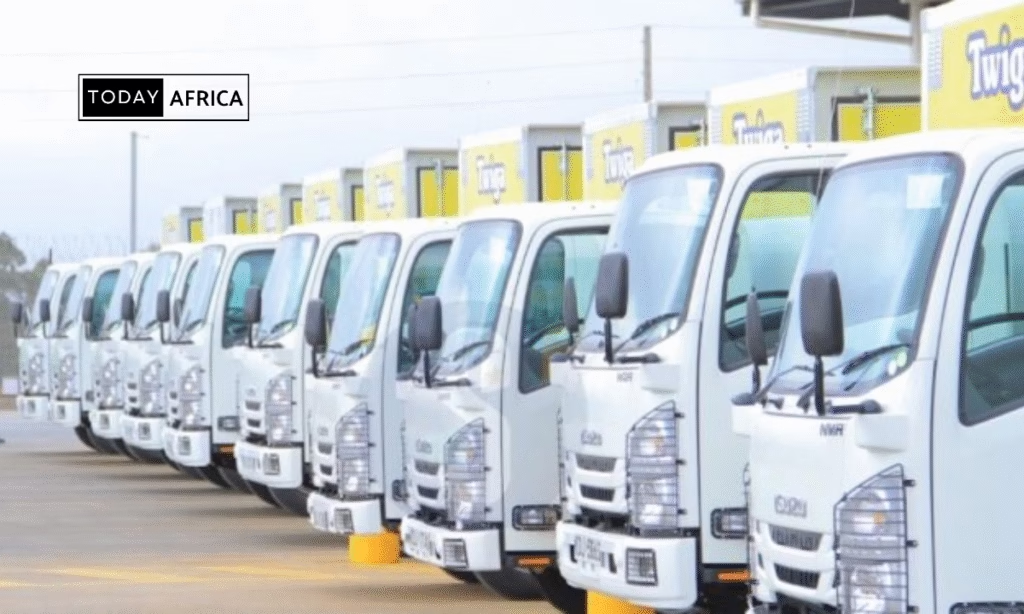
Adaptations Twiga has made
- They moved from pure fresh produce to a broader product suite (FMCG) and own-farming (Twiga Fresh) to control supply and cost.
- Restructuring: As reported in 2024, they laid off staff and shifted towards asset-light logistics in some areas, indicating internal realignment.
- Deepening tech stack: The Google Cloud partnership and use of data analytics/routing/credit for vendors signals deeper operational sophistication.
- Localised expansion: The regional expansion strategy now emphasises replication of their Kenyan model in Uganda, Tanzania, and West Africa (though results remain to be seen).
Future
- Profitability path: As of now, Twiga is still scaling. The heavy infrastructure means they must reach a certain scale threshold for margins to improve. Watch for improving unit economics.
- Regional expansion: The model is replicable, but new countries bring new logistics, behaviour, regulation. West Africa (Nigeria, Ghana) is very different from Kenya.
- Vertical integration: Twiga’s own farming (Twiga Fresh) gives control of supply and improved margin, but also adds farming risk (weather, pests, capital-intensive).
- Technology edge as moat: If Twiga can build sophisticated data, forecasting, route optimisation, vendor credit scoring, then they may differentiate strongly from competitors.
- Policy & infrastructure enablers: For the informal retail/food supply chain to truly transform, improvements in roads, cold chain, digital payments, and rural connectivity will matter. Twiga is part of that ecosystem shift.
- Investor caution & scalability: Investors will watch revenue per vendor, order frequency, margin per delivery, and how Twiga handles expansion costs. The pressure to scale without burning cash is real.
What Twiga’s story teaches founders & policymakers
- Founders: Solve a real ground-truth problem, build trust with your users (farmers/vendors), ensure logistics/operations are built in from day one, keep unit economics front and centre.
- Policymakers: Informal retail, smallholder farming and food supply chains are strategic sectors. Supporting digital payments, road infrastructure, cold chain, MSME credit will unlock value.
- Investors: Agritech isn’t just “software”. It often involves hardware/logistics/asset heavy business—understanding operational risk is essential.
Conclusion
Twiga Foods’ core achievement is that it has digitised and streamlined Africa’s informal food supply chain, connecting thousands of farmers and informal vendors, using mobile payments, logistics, data, and infrastructure, and in doing so, addresses a huge structural inefficiency.
And for the next decade of agritech in Africa, Twiga’s story will matter because it sets a benchmark; yes, you can build a large-scale supply-chain business in Africa’s informal sector, but you must do so with operational realism, cost discipline, tech + logistics, and a deep understanding of local markets.
In the end, Twiga Foods doesn’t show us that technology is a silver bullet; it shows us that when you pair technology with real operational infrastructure and focus on neglected segments (small farmers, informal vendors), you start to move the dial.
Whether Twiga will deliver enduring profitability and pan-African scale remains to be seen, but what they’ve done already is meaningful.
Perhaps that is the stronger takeaway is that in Africa’s food system, it’s the doing that matters, not the promise.
Leave a comment and follow us on social media for more tips:
- Facebook: Today Africa
- Instagram: Today Africa
- Twitter: Today Africa
- LinkedIn: Today Africa
- YouTube: Today Africa Studio

